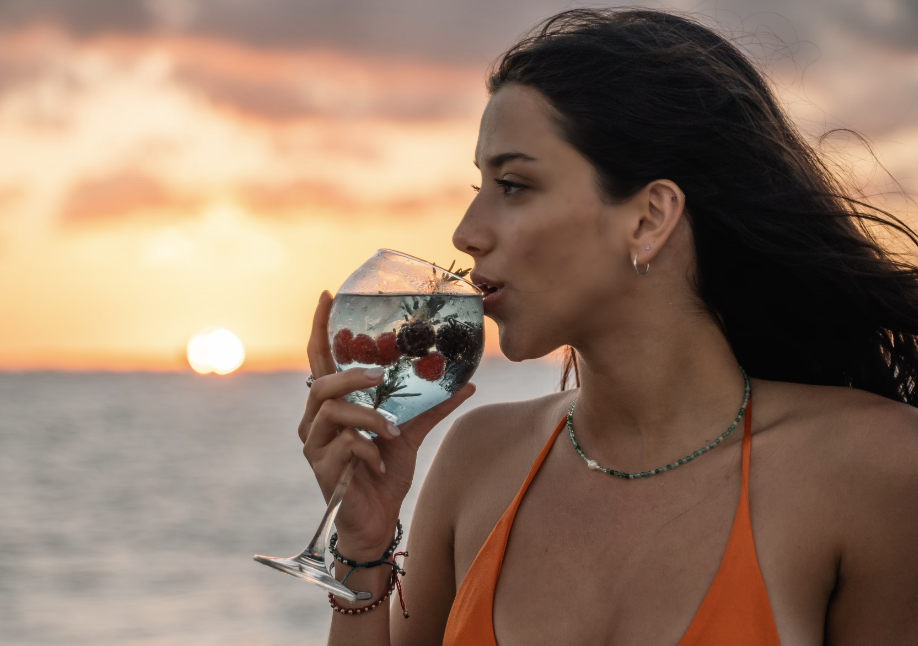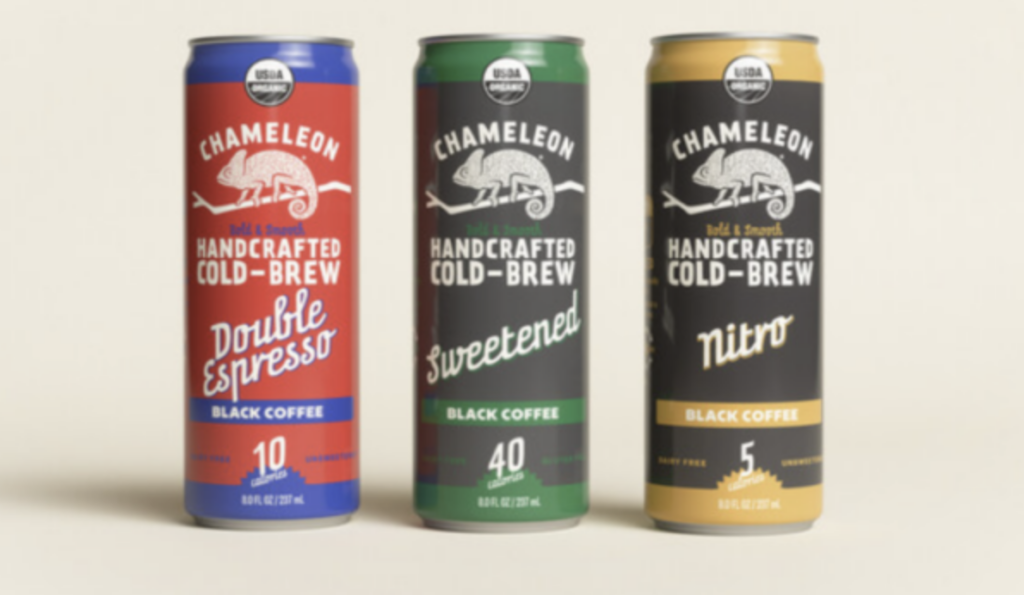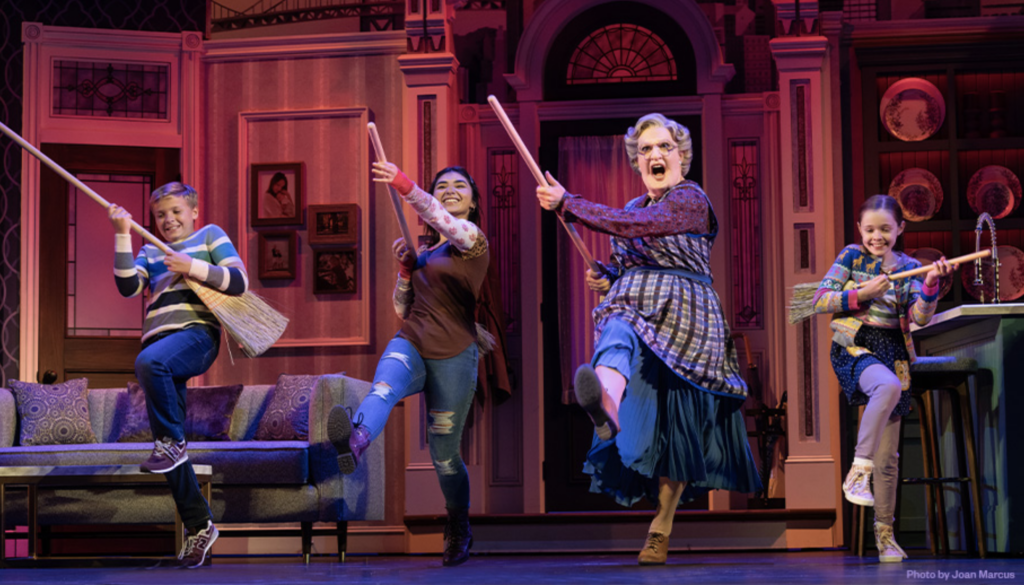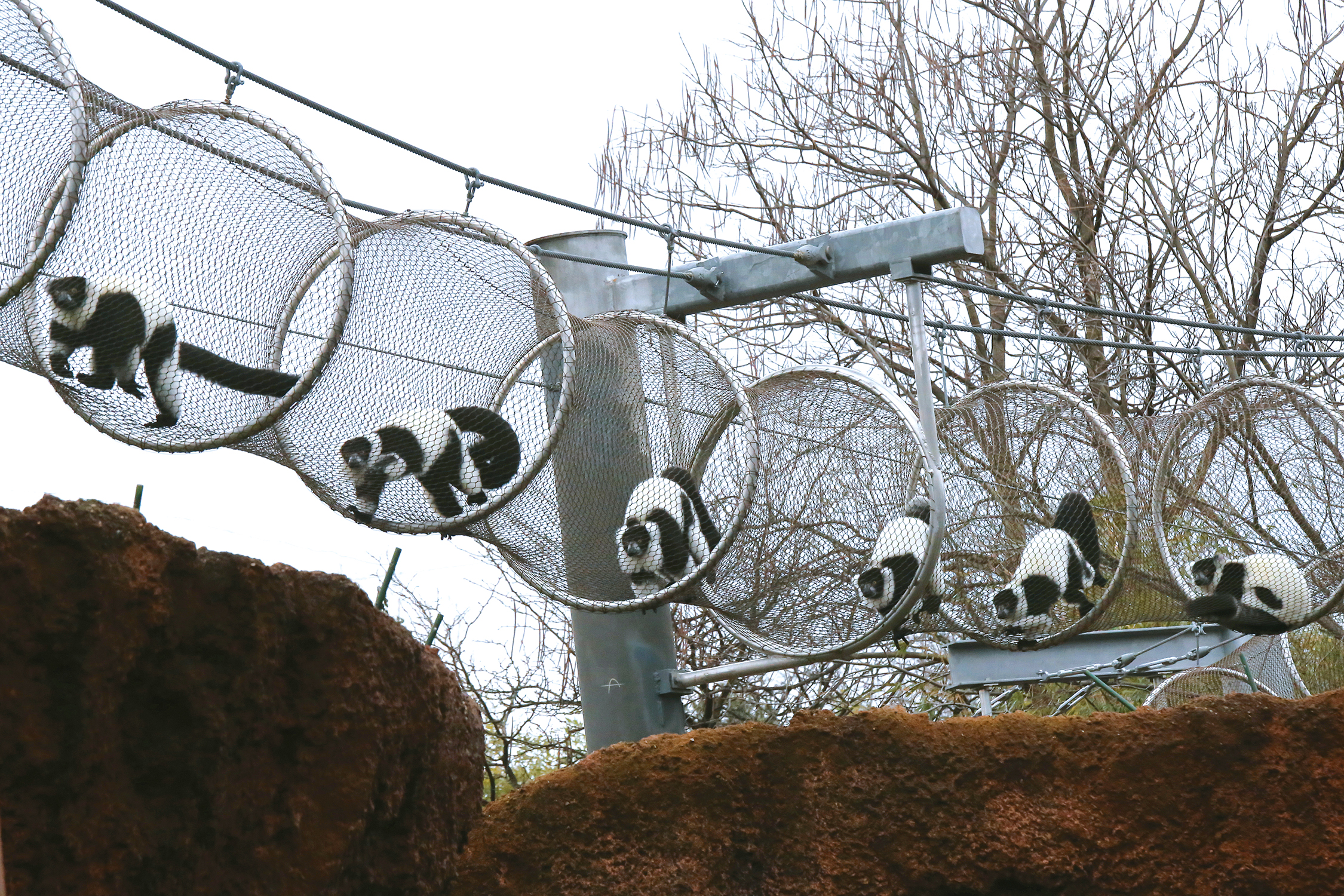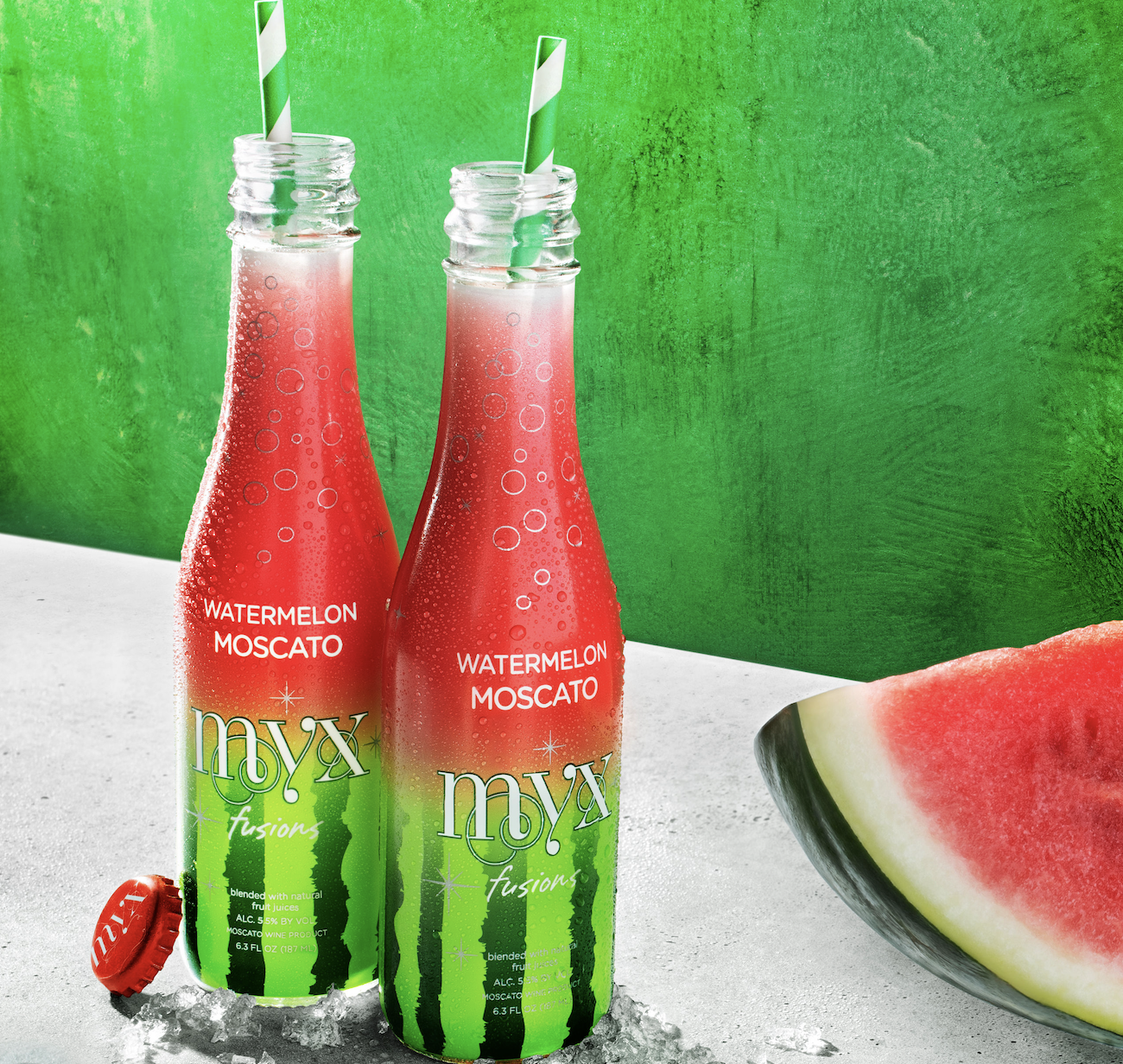Hellertown-Lower Saucon Summer Restaurant Week begins Sunday, July 17th
The Hellertown-Lower Saucon Chamber of Commerce (HLSC), a proud partner of the Greater Lehigh Valley Chamber of Commerce, is spicing up your summer in the most delicious way
2022 Summer Restaurant Week!
From Sunday, July 17th – Saturday, July 23rd, food lovers from across the Lehigh Valley can get a taste of everything that the Hellertown-Lower Saucon food and beverage scene has to offer. Participants have been instructed to pick an offer that best suits their business to feature for the initiative.
Advertisement

This can be, but is not limited to, specials such as a “set-price” or “prix fixe” menu, a gift card deal, or discount opportunity.

Summer Restaurant Week gives patrons a chance to return to their favorite spots, while also providing participants with an opportunity to reach new customers with enticing deals. Not only is the exposure beneficial for local establishments, but it also assists them in generating additional cash flow.
Jessica O’Donnell, EVP of Affiliated Chambers for the Greater Lehigh Valley Chamber of Commerce, said, “Come take a bite out of the Hellertown-Lower Saucon’s thriving food and beverage scene! With sixteen participating businesses, who are all featuring different specials, this is the perfect opportunity to enjoy the local flavors of our community. This seven-day event will spotlight participating restaurants and encourage diners to frequent each of our delicious establishments, right here in the Hellertown community. Our hope is to connect residents to these local eateries while also welcoming and introducing new patrons from surrounding communities. This is a great opportunity to try something new and to support local!”
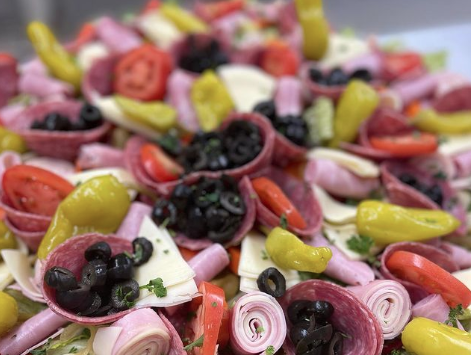
Kate Hartney, Coordinator for the Affiliated Chambers for the Greater Lehigh Valley commented, “I can’t wait to experience my first Restaurant Week with the Hellertown Community! From the Crossroads to the Highlands, Hellertown has so many delectable options to dive into, you’ll be glad you have a whole week to sample everything Hellertown has to offer. When we all shop small and shop local, we all win!
Erik Sheetz, Owner of Braveheart Highland Pub said, “We’ve been involved in every Restaurant Week since they started, and we love being a part of our local Chamber!”
Kevin Cordon, Owner of Roma Pizza said “I’m excited to put our spin on New York Style Pizza front and center for Restaurant Week! Enjoy your slice right here at home in Hellertown!”
Participants (as of 7/11/2022):
- Local Mama Catering Company
- Rita’s Italian Ice of Hellertown
- Rocco’s Pizzeria and Italian Restaurant
- Roma Pizza
- The Hellertown Crossroads Hotel
- The Springtown Inn
- The Vibe Nutrition
- Vassi’s Drive-In
- Wings on Main
- Yianni’s Taverna
Participants’ Specials: Offers can be viewed at https://www.lehighvalleychamber.org/hellertown-lowersauconsummerrw.html
Pricing Information: Varies depending on each establishment’s offer.
Sponsors (as of 7/11/2022):
- Silver Sponsor: Tax & Accounting, Lindsay O. Albert, EA
- Bronze Sponsors: Lost River Caverns
- Marketing Sponsor: iHeart Radio
Interested in getting involved with or supporting the Hellertown-Lower Saucon Chamber? Contact either Jessica O’Donnell or Kate Hartney for more information.
For more information on this event and any upcoming events, visit the Hellertown-Lower Saucon Facebook page, or the Affiliated Chamber’s Instagram or LinkedIn pages.
About the Chamber: The mission of The Greater Lehigh Valley Chamber of Commerce is to improve the economy and quality of life in the Lehigh Valley Metropolitan Area. We accomplish this through business-to-business networking events and marketing products, affinity programs and exclusive, money saving member benefits, training programs, government affairs initiatives and public policy advocacy, and community development enterprises. With nearly 5,000 members who employ more than 200,000, the Chamber is the largest in Pennsylvania and New Jersey, and in the top ten nationwide.
YOU MIGHT ALSO LIKE
Philly’s Search for Female Empowerment: The Orchid Book Conversation with co-authors Rocio Aquino, Angel Orengo
Finding Your Power through healing: The Orchid Book Conversation with co-authors Rocio Aquino, Angel Orengo
Rocio Aquino and Angel Orengo, co-authors of “The Orchid” are, as their website shares partners in life and spirit, wanderers who found home in each other’s hearts.
Their journey together has been filled with a myriad of cultures, beliefs, and encounters with both the ordinary and extraordinary.

The Orchid: The Secret Code of Modern Goddesses
The Orchid: The Secret Code of Modern Goddesses
The story focuses on five of these women, each wrestling with unique life challenges such as closeted sexuality, career pressures, spousal abandonment, sexual abuse, eating disorders, and manipulative behavior.
As they engage with the program’s curriculum, they peel away layers of self-deception, pain, and societal conditioning, discovering that the love and solutions they seek already reside within them.
The Orchid serves as both the setting and the metaphor for their collective journey toward self-realization and empowerment.
Today’s conversation has been edited for length and clarity. For the full, un-edited conversation, visit FlavRReport’s YouTube channel here.
Joe Winger:
We’re talking about The Orchid, The Secret Code of Modern Goddesses.
I go to a lot of book events, and a few weeks ago in Los Angeles, I went to The Orchid’s book signing. What I was amazed by was there was so much emotion in the audience. Big smiles, happy tears.
What are we missing in our lives that your book, The Orchid, helps us recognize?
Rocio Acquino:
How beautiful [of a] question. I think, to be honest, that we are perfect already. And we forgot.
Angel Orengo:
Yeah, I think we forget that at the core life doesn’t need to be that difficult. It’s not that complicated that we allow ourselves to be complicated by the things around us, by the things that we’re told, by the way we think our lives need to be, by the number of houses, clothing, shoes – everything right that we need to have.
The moment you bring it down to the basics and you’re like, yeah, life should be simple. We are okay. We’re just learning here. We’re back. We’re like in a school and the teacher wasn’t angry because we got it wrong. On the contrary, it was just like, Oh, don’t worry. I’ll teach you.
Joe Winger:
So what I’m interpreting is, people are having these emotional realizations because they’re remembering your message that they’re perfect already?
What do you think it is about that audience interaction that your book is giving?
Rocio Acquino:
I was in the front, so I was not as intimate like you and your perspective. But what resonates with me and what I see that can resonate for someone else is that they know and they understand that they are not alone on this journey.
The struggles they are feeling are real. They feel the difficulty. Everyone at some point is [feeling] who here has a difficult path? Everyone is like me. That connection is not superficial, but it’s more in a deep way when you are in a group setting after being so disconnected really to talk about the important things that matters in life has another connection.
Angel Orengo:
We’ve gotten large amounts of feedback by now. Some people are touched by the fact that someone has written a book selflessly to help them. I know there were people that were touched very much by that.
I think you understand what that means really, it was all about how do we help the reader get to a different place, right?
Go from point A to point B, right? There are people that for the first time find themselves in an environment where they can treat themselves with some kindness, where maybe they haven’t stopped to think about that before. Because we try to block it.
It’s easier to numb pain than to experience it and let it go.
Other people are [having the realization that] it’s not that complicated. I’m just so happy that I found this now. I think it’s just all of that energy.
The energy in the room that day was really powerful. When you’re in the presence of that energy and by presence, the collective – it wasn’t us. It’s we – emotions come to the surface, and that’s how we clear emotions, and that’s how we clear energy.
Thank you for sharing that because I didn’t realize that was happening.
Rocio Acquino:
We didn’t have any idea and remember, we have two teenage daughters. They bring us back to reality really quickly at our house.
Joe Winger:
Going to the actual book itself between the characters, the descriptions, their backgrounds.
What’s real? What’s fiction? And for fiction, what inspired it?
Rocio Acquino:
Everything happened, everything is real, but never happened all together.
Angel Orengo: And not to those people.
Rocio Acquino: We know that some of the places exist and all the situations exist.
The fiction is today there is not a place that you can go for free to heal in this way. But we hope that someone will open it. Let’s hope we can do it..
Angel Orengo:
Yeah, the characters, the book is absolutely real.
Every single thing that happens there has either happened to us or happened to someone we know, or we’ve read it in the news.
The story about the model and the sexual abuse that’s real, right? It’s happening in the modeling industry now where they have gone through their own “Me too” movement.
There is a scene in which “Olivia” is doing a silent walk and she has a vision of her mother near her. [to Rocio] That’s something that has happened to you, about your own mom who passed away.
There’s a scene in which “Olivia” is speaking to her father. It was a difficult relationship and her father wasn’t the best version of a father that he could have been.
That a lot of it is after my own experience with my own father, who I met three times in my life. One of which, the longest, was five hours. So we took pieces and through the help of everyone who collaborated in the book to construct these characters that brought together all these experiences.
We wanted to write the story of Rocio, who morphed into “Sophia”, and then we realized that we wanted to tell more that we needed that in order to be of service to the people who would be reading the book, we needed to tell more stories because there are so many things happening to women out there that we don’t hear about that we wanted to do justice by representing as many of them.
That’s where it all comes from.
Rocio Acquino:
The same happened to us when we were reading, not writing the book. We were crying constantly. At one point I put it down, we were crying [so much]. Then we did it first in English and after in Spanish and then we were crying in Spanish so was like, “Okay I’m continue to heal.”
The process for us was really intense
Angel Orengo:
The experience that you’re having [the audience and reader’s emotion], everyone is sharing similar things. It’s simple, but as I’m going, I find myself thinking about things that I’ve never thought about in my own life.
I need to put them down. Sometimes it takes me a little bit before I pick it up again. So it’s like peaks and valleys of intensity.
Joe Winger:
As authors, how are you feeling now knowing that so many people are having such extreme feelings and discoveries from your pages?
Rocio Acquino:
You never know how your work is going to be received, to be honest.
Even though we have a very strict culture of not judging anyone, being totally neutral, we are going to make suggestions.
Now that people are seeing the book, it’s a pleasure, it is humbling.
Angel Orengo:
There was intentionality in what we were writing. The book came after our first year of deep introspection into who we were and how we wanted to change our lives. [We studied] a lot of self help books. At the time that we started writing, it was about how do we share this with people who normally don’t have access to information
Also for people who don’t have resources to go and spend time in a retreat for a weekend or spend $5,000 or even $500. [We thought] we should do television because this is our background. But let’s own the intellectual property, the story behind it.
[We thought] we should do television [series], but let’s own the story behind it.
So when we sit down with the people who are going to help us craft the TV show, we have a say in how it’s made. Right now what ends up happening is that people don’t think that love is powerful enough to deal with the issues that you have around you.
We think that we have to combat anger with anger or force. That’s what we’ve been raised to believe. We’ve gotten to a point where love really does conquer all, but not in the way in which we were taught.
So when we approached a book, it was, “Let’s do it with a lot of love,” we said, and if we can help one person, it’ll have been worth it.
Everyone who we are connecting with is having similar reactions so it’s humbling. We’re filled with gratitude beyond belief that we were chosen, selected, inspired to write what we wrote and to put it forth.
Not just write it, but really now be the face of it and take it to as many places as we can.
Rocio Acquino:
That’s the main point. When someone says “Thank you”, because now that means I can continue to share with more people. If more people feel better about themself, that is incredible. That’s our main point to invite everyone to our party.
If more people feel better about themself, that is incredible.
And the part is really, if you are feeling better about yourself? Great! So it’s about that.
Joe Winger:
During your book event introduction, you mentioned one of your goals is to bring The Orchid to real life. Where are we today with that goal? How can the audience help you?
Angel Orengo:
Everything in your life begins with an intention. Waking up in the morning, getting off your bed, right?
Everything is intention after intention. The first and most important thing that we want is for people to truly enjoy the book because through the enjoyment of the book, there is a transformation that’s taking place.
We now understand that the way to change the world, and even though this is not the ultimate intention is the indirect intention, we can make this place a better place to be for all of us.
It begins by me feeling better about myself, and you feeling better about yourself. And it begins by all of the things that we create.
All these things these women are experiencing in The Orchid.
To your question, the first thing is for people – and it’s happening already – to say, wouldn’t it be awesome if this place really did exist and these transformations were taking place. If one person says it, it’s a big deal.
If a million people begin to think that way, or a billion people begin to think that way. Wow. It is about the power of what we have to manifest.
In terms of The Orchid as a retreat center, I think there are versions of it throughout the world already. There are many places that exist. I think those places will be inspired when they read our book to go to a different level. We can do more to expand the way we’re doing this.
There are podcasts down the line. There are television shows that we’ve mentioned. There’s a digital community that we would like to work on and develop. There is a nonprofit because there are going to be issues that will require that approach.
We’re going to continue building this community that ultimately is going to want to continue conversations as to how I deal with this.
Even though we attempted to do a very complete seven day experience at this retreat center, the truth is that the experiences can vary greatly.
There’s so much more out there.
We only depicted a number of healers. The number of healers and healing modalities out there are endless. I believe it will happen.
We have had initial conversations with certain people about it, but I would say it’s in early stages.
I would much rather encourage everybody who is already well advanced into a retreat center to look at themselves and see if there’s anything that can be learned from ours and create their own orchid so that we can help more people around the world.
Rocio Acquino:
Yes. Take the lessons, what you learn and it really is, “How I can begin to have a conversation with someone.”
Joe Winger:
As authors, can you talk a bit about what your writing process was like? What was the timeline going from idea to finished, published book?
Angel Orengo:
We began our process for the book at the end of 2021. So it took us about two and a half years.
We’ve come across a lot of people who say, ”Wow, that’s fantastic.” It took them nine years or 10 years and so on.
We were doing this 24 hours a day for two and a half years.
We relinquished everything else that we were doing and we dedicated ourselves to our growth, our personal growth and introspection, which in itself was the core of what’s at the book and to crafting putting on paper as many of the thoughts and ideas that we had.
The first step was Rocio and I basically went back and forth. We started thinking about which things worked. At first she was the guinea pig. She was experiencing things, a lot of healing practices.
Rocio Acquino:
It’s a process. Experiencing different things, and at the beginning you don’t have it very clear, but you begin, “Okay, this was my story.”
The main thing was to teach the lessons in a very original way. When you are relaxed, when you are in your house watching TV or reading.
You begin to question, is this serving me or not? The process of putting our learnings on paper.
Everyone is a creator. We can create and create.
No one is going to have our perspective. Angel was very clear [about] what he likes in life and has never spoken bad about anyone.
In my mind, I was not like that. I was speaking bad about people. But then I learned the power that [kind of speaking] represents and now I don’t want to do it.
But it’s those lessons that you begin to learn [from]. I grew up with that different paradigm, and now that I know another one, I prefer the new one.
Because it gives me more freedom, creativity, and everything.
We put everything in place. We worked hard to make this happen because our motivation was to do a book for [the younger version of] me 32 years ago when I tried to kill myself and I didn’t have the tools and I didn’t have anything.
So this is a book that I wish my mom had before she passed away 32 years ago.
The motivation was really to spread that another way of thinking was available. So we were in a hurry, like this needs to be available for those Rocio’s, for those Pepitas who were out there, who are out there and need to have something that they can grab quick, and they can begin to see a change.
Angel Orengo:
I would add, the process of writing the book was truly experiential. It wasn’t just spitting it out, we were living certain things.
There were times we stopped the book to have an exercise of releasing energy.
What we realized as we were writing, there were things inside of us that needed to be addressed.
Whether it was an experience that happened when you were a child…
I can’t tell you the times where we were crying, deeply moved by what we were writing and reading and how that was cleaning us inside and how that was changing us.
We went through different hurdles.
For example, we realized at an early stage that the book could not be judgmental about anything. if we were going to connect with readers, right?
We had no idea that we needed to ensure that the people at the Orchid, Mary and her staff. [They] never looked at anybody and said, “Oh, I’m so sorry.” It’s more, “We know we’ve been there. You too can heal from that.”
And so all of those things emerged as we were writing.
There was intentionality and some clear ideas as to how we wanted to proceed. The truth is that we were experiencing and adjusting as we went.
Rocio Acquino:
With a lot of respect.
Angel Orengo:
With a lot of respect for each other, the people we were collaborating with, and the reader.
Joe Winger:
The book is called The Orchid: the Secret Code of Modern Goddesses.
The color scheme, it’s primarily female names, from a traditional or direct point of view, it’s geared more toward a female audience.
As the authors, trying to get a guy in a woman’s life to read it. What would you encourage them to say to get a guy to read it?
Rocio Acquino:
#1, I’ve been a woman and reading many books about guys, written by guys and I love it.
So maybe it’s time for a guy to be open minded. I can do this and I can read a book about women.
#2, it’s incredible to go in the deepest way of thinking of women. So try to understand how they work and what they are thinking. This is a fantastic opportunity. It has so many good sides because you want to have a better understanding of your mom, of your sister, your girlfriend, your wife, your daughters.
Then you’ll have a better way of how women relate to each other, but how do they relate to themselves, and how you can be an ally in their process.
Angel Orengo:
Recently I was writing a brief article for a fraternity that I belong to and I was very active when I was in college.
Essentially the article is to inspire them to read this book. The issues that we talk about, whether it’s sexuality, limiting beliefs, the power of forgiveness, the power of gratitude or any of the other issues that the women who are there are speaking of, they’re universal.
They’re not gender based, right?
So any opportunity that you have or that you give yourself to relate to those issues, it’s an opportunity to grow.
I think for men for far too long, we’ve defined masculinity as “the absence of emotion” or perhaps the “existence of physical strength.”
More and more we’re finding out about emotional intelligence, right?
That emotions in general and our ability to share them to be vulnerable is powerful and can only enhance the people that we are.
I would say be open minded. The issues are truly for everybody. You can learn a thing or two, not just about yourself, but about the women in your life.
It’s and it could be really powerful. Plus let’s face it, the better we communicate with one another, the better we relate to one another across genders the better our community is going to be, and we need more community in the world.
I think if anything has shown us, and this is true at any time, right?
Every person you speak to, we’re all longing for community. We need connection. We need to connect more with each other.
Rocio Acquino:
Deep connection, not superficial.
Joe Winger:
The book is called The Orchid, The Secret Code of Modern Goddesses.
Wrapping up, for people out there who want to buy the book after hearing about it, Whether it’s websites, social media, how can we follow you? How can we buy the book?
Rocio Acquino:
There are so many ways right now. We have a website: TheOrchidBook.com
You can find the book in English and Spanish.You can buy it on Amazon, and Barnes and Noble, Apple, and we have the audiobook too.
And the exercise, if you want to do a book club with your friends, you can do some exercise that are on the website.
Instagram, Facebook YouTube, TikTok. All @TheOrchidBook_
Philly Celebrates with Perfect Passover Wines for 2024, Revealed by Kosher Wine Expert
Philly Celebrates with Perfect Passover Wines for 2024, Revealed by Kosher Wine Expert for Passover 2024
Passover starts Monday April 22 at sundown and ends April 30th. But today’s conversation is about the flavors of Seder dinner.

Jay Buchsbaum
Royal Wine and Kosher.com’s Jay Buchsbaum visits to talk about flavor, tradition, tastes for every family member and what’s exciting in the wine world for 2024.
This conversation has been edited for length and clarity. For the full, unedited conversation, visit our FlavRReport YouTube channel.
Joe Winger: Jay, welcome back. I appreciate that you’re returning. Last time was great and we learned alot.
Jay Buchsbaum: Thank you for having me. Wow. This is great. So getting invited back for a second date, that’s really cool.
Joe Winger: Passover is just around the corner and we want to talk about different over wines to enjoy during the celebration and some great wine pairings.
I wanted to start off with what might be one of the popular new bottles – Carmel Black Cabernet Sauvignon.
Jay Buchsbaum: It’s very hot and the reason it’s very hot is because people want something that’s rich and flavorful, especially the American palate, what we call the New World style.
Opulence, fruit forward, but they don’t want to spend a fortune like you’d have to from some fancy vineyard in Napa or from Judean Hills. When it comes to Israel or the Golan Heights, and this is one of those wines where they’ve put together this at the beginning of opulence, lots of fruit forwardness, 14 months in oak and about $25.
So it’s really one of those really wonderful wines. What I noticed, and they say they forgot to do it, but I noticed that it does not have an appellation specific, except for Israel. The reason I believe the winemaker did that – I don’t know for sure – he talks about it on the back [of the bottle] that they brought the grapes from some of the finest vineyards. He chose small amounts [of grapes] from the best vineyards from different places and put them all together, carefully crafting it so that it’s big and rich and flavorful and still under $30 bucks.

Joe Winger: That sounds amazing. What are some good food pairings that you’d recommend with it?
Jay Buchsbaum: A roast would be great. On the first and second night of Passover, we don’t officially roast anything because we don’t want people to think that it was a sacrificial lamb that was done in Egypt because we don’t have it today yet.
Until the reestablishment of the temple on the Temple Mount at some future time.
So people cook a roast in the oven, it’s not barbecued. That’s what they’re talking about from a historical, spiritual sense – but a delicious roast, maybe chicken marsala, where you have mushrooms and caramelized onions, you have a really rich flavor to go with that.
A lot of the Sephardic foods are like that too. We talked about traditional foods. Traditional foods from where? Sometimes it’s Eastern Europe, sometimes it’s Middle Eastern, and sometimes it’s Sephardic.
Lots of seders have a mix of all [cuisines] because you have melded families.
Joe Winger: Royal Wine currently has a wide roster of wine suggestions for Passover Something for every adult at the table, from Grandpa to 25 year old Grand-daughter and her boyfriend.
Jay Buchsbaum: That’s a great point. I’m going to give you the last one first only because I thought this was so much fun when I thought about it and I actually might do it.
Let’s say the boyfriend is coming over. He wants to bring you something and he doesn’t know what to get you because, he’s not that observant..
So I thought, why don’t you end the meal with something Sparkling. The Momentous Rosé. That might be fun. You go out with a pop, so to speak. There’s Vera Wang’s Prosecco Rose that’s also wonderful. Both around $20.
But if you want to go really high end, why not go with the Rothschild Brut Rosé from Champagne, which is magnificent. It’s 100% Pinot Noir, and about $100 a bottle.
So you have great diversity and accessible and quite delicious sparkling wines.
Grandpa, or if you have a real fine wine guy. You have beautiful wines from the Rothschild vineyards, the Haute Medoc. which is in the upper $30s, and then you even have Grand Cru’s LesCombes, Grand Cru Margaux as an example, and some amazing wines from the Herzog Winery in California like the Alexander Valley Herzog Reserve, or the Napa Valley Herzog Reserve.
We have a beautiful Lake County Reserve Cabernet from California. Big, opulent, delicious, mouth filling.
I start my Seder usually with a rosé. The reason for that is because you’re starting your Seder, having eaten nothing pretty much since the morning. So you’re on an empty stomach and the tradition is to finish at least the first glass. So I try to start with a rosé. It’s a little lighter, a little lower in alcohol, a little lighter in texture and, and I like to start with an Israeli wine first.

Joe Winger: Iis there a hidden gem as far as just high quality with amazing value?
Jay Buchsbaum: There’s a really wonderful wine from New Zealand.
It’s a white wine, not a red wine. It’s made by the Rothschild family, but it’s made in New Zealand, called Rimapere Sauvignon Blanc. Less than $30 for sure. Fresh, sweet lemons, but with enough acidity and structure, almost like a palette cleanser.
Joe Winger: Anything that you’re looking forward to in the next few months that wine lovers should be getting excited for?
Jay Buchsbaum: We were missing rosés from Israel for a whole year because of the sabbatical year. We skipped that vintage of roses, and so they’re back for the first time in 24 months for this Passover.
I love some of the new Italian wines. One of them to take a look at is Cantina Giuliano. it’s a boutique winery. They make 3,000 – 4,000 cases maximum. It’s run by a young couple and I just had them over at my house for Sabbath Shabbat. His wines blew people away.
I think the most exciting thing is our new winemaker and what our new winemakers is doing with our grapes. His selection and his final product over at the Herzog Wine Cellars. And that could be
Our new winemaker, his name is David Galzignato. He’s with us about three years and he has a background that is with some of the finest and smallest, medium sized boutiques.
He was going to be moving to France, going to go for his MW [masters of wine] and they asked him if he’d come and consider working with us and he did. He has been making literally blow your brains out wonderful wines so our Napa Cabernet, our Alexander Valley Cabernet are just up and down the line, the wines, especially the reds are just rich and opulent.
He got Joseph Herzog to buy a visual sorter, they range in cost between a $100,000 – 1 million dollar machine.
What they do is when the grapes come in [during harvest] and there’s something called sorting tables.
Done by hand [vineyard workers literally sorting through the harvested grape bunches, looking for] damaged or a little beat up or whatever, and they only allow the perfect grapes to go through.
This visual sorter does this electronically by computer, so nothing is missed, zero. As a result, the grape quality is much higher
Famously said in The New Yorker Years ago, “There’s only three things that matter in good winemaking. Good grapes. Good grapes. Good grapes.”
So, the fruit that we get and the fruit that we end up making wine out of is literally the most important thing.
By using these kinds of methods, which are not inexpensive. But the quality is through the roof. We’re looking to make a 100 point wine one of these days and I think it might we might get close this year.
Philly Cocktails! Now Madre Mezcal offers a Gateway to a Better Taste
Philly Cocktails! Now Madre Mezcal offers a Gateway to a Better Taste
Today’s conversation is with Ryan Fleming from Madre Mezcal. The LA nightlife veteran reveals his time working behind the bar in some of Southern California’s hottest spots, as well as the inspiration that got him to travel to Mexico, discovering Mezcal.
The aroma, flavors, science and food pairings for Mezcal.

Love Tequila? Discover the Gateway to better taste with Madre Mezcal’s Ryan Fleming
This conversation has been edited for length and clarity. For the full, unedited conversation, visit our YouTube Channel.
“…I’ve been a big Mezcal lover before I ever sold it…”
Joe Winger: Can you share the behind the scenes or how the brand itself was created?
Ryan Fleming: I’ve been a big Mezcal lover before I ever even sold it or made a dollar doing that. So I got to actually meet Ron Cooper, who is the legend that started the Del Maguey label back in 2011.
I got to drink rabbit Pachuca with him and all these other amazing things. The reason I bring him up is he’s a kind of one of the people that we look up to, how to sustainably bring a brand and how to create culture that crosses boundaries in a sense.
He has a beautiful book that I recommend anyone to read if you haven’t read Ron Cooper’s book.
But we share a similar story. One of our founding partners, Tony Farfalla and one of my good friends, Stefan Tony’s an artist and he was literally traveling through Oaxaca doing documentaries and embracing the art and culture. He happened to meet Jose Morales, which is the first family we ever worked with.

If you have original bottles of Madre [Mezcal] before the labels have changed, it used to say Jose’s name on the bottle.
So Tony was bringing bottles back to Brooklyn in plastic water bottles and it snowballed. His friends in Brooklyn were like, this stuff’s great. Started out in plastic water bottles in 2014. I think it was 2016 when our first glass bottles actually came by and we became like of a more legit brand and company. But it started with Tony and Stefan; and they brought on our CEO and COO, Chris and Davide.
Chris actually is one of the founding driving forces in the electronic scene in the 90s in Europe. Chris comes from a very artistic, music based background. Then he went on to work for some bigger alcohol brands in the vodka world.

Davide, who is our COO, my direct boss, who I love, is Italian and his whole family built furniture and he got his big break by importing and bringing furniture over [to the United States]. He also works with a beautiful high end apparel line.
“…everyone has a very unique artistic background, which really reflects the brand and the label…”
So everyone has a very unique artistic background, which really reflects the brand and the label. Just not wanting to make a quick buck and actually make something we can stand behind and believe in.
As the families now blossom into four, we use three: the Vasquez family, the Blas family and the Morales family are our three main producers for our red and black label, which most people are familiar with.
We just brought in Moises and he’s actually from Santa Catarina Minas. That’s a little town where all they really make is their production. It’s a town known for nothing but clay pot distillation. So if you actually use a copper pot in, in Manera and Santa Caterina Minas, you’re looked at as what are you doing? That’s not what we do here.
He’s our last and newest producer and he may be the most cowboy of them all, and he’s my favorite.
When you get to Tlaxcala, you have to walk over like a little rope bridge over like a river and stuff into the hills of Minas to see his production, and he’s got his grandfather’s old still, and he’s got his mom’s little kitchen that he wants to reopen, and it’s like a restaurant. But if you and I were to look at it, it just looks like a backyard set of tables and chairs with a cooking center.
No, this is a restaurant for the village. It’s really beautiful down in Minas. I recommend everyone, if you get a chance to go down there, it felt like the jungles in Costa Rica, cause it’s up near the hills and it’s just so green and lush up there.
“…I’ve been working in the alcohol industry for almost 15 years …”
Joe Winger: What got you down there? Was it for a vacation or for Mezcal?
Ryan Fleming:
So I’ve been working in the alcohol industry for almost 15 years and I worked for the Houston Hospitality Group for over a decade, helping run programs and menus. I worked for a couple other restaurants, but I used to work for Stillhouse Whiskey, which many people remember the terrible flavored moonshine in a gas can.
Yeah I actually sold that. I did pretty well, there was always one flavor that someone loved. I had the mint chocolate chip and I would keep it in the freezer to take care of my sweet tooth when I didn’t have ice cream. So that’s how it started.
My buddy, Stefan, who’s one of the founding partners goes, “Hey, we got this Mezcal company.” I was just basically consulting for free lunches.
One day he goes, do you want to go to Oaxaca? And I went, absolutely.

I familiar with going down to Mexico city, but I’d never been as far South as Oaxaca. So I jumped at the chance.
[Meanwhile] we all got an email from Stillhouse saying “Hey, I know things are being shaken up right now, but trust me, everything’s fine. Don’t worry about it.”
That weekend, apparently the whole team got laid off, but I didn’t get the email untll I came home Monday. They’re saying, “Ryan, are you going to be okay? Do you need help finding work?”
So I went down to Oaxaca, met the families, broke bread with Jose Morales, got to meet his mother who blessed the roast and cooked us dinner. They offered me a job.

That was started my journey about six years ago with Madre [Mezcal ]and I’ve been with him since.
Fleming motions to tattoos on his arms and hands.
Discovering Madre Mezcal
I have it tattooed on my hand right here. I have it tattooed on my palm right here. And I think I have another one on the inside of my leg too. We do tasting events and we’ll have pop up tattoo artists all the time.
Tequila vs Madre Mezcal
Joe Winger:
You mentioned the tastings and the education. Are there quick lessons that you teach the most often?
Ryan Fleming:
Basic production, culture, financial, environmental and economic sustainability.
I don’t think people understand that Oaxaca is the second poorest state in Mexico. Everyone thinks the Mezcal boom must be bringing so many jobs, but it really only affects about 20 – 40,000 people that live in Oaxaca for the production,
Mezcal is great because it does bring some financial sustainability to the families. Jose started off driving a taxi to pay his bills and now he’s making Mezcal in his family’s tradition. His whole family, his cousin, his uncles, they all make Mezcal for a living now.

There’s so much culture behind it. Even the old argument of did the Spanish bring over copper stills and that started distillation or does it go back to the Aztecs and Mayans? Because they found distillate and pottery from 3000 years ago. It’s those little nuances.
People really like to talk about the environmental, but giving back to the people down there by not just buying product, but giving them some ownership, which Madre does do, so that everyone has a little bit of skin in the game.
So I think Sustainability, whether it’s environmental, economical, cultural, and production. Those are the things I really like to talk about.
Joe Winger: What is the basic difference between mezcal and tequila? Or is it more complicated?
Ryan Fleming:
You could say production techniques, additives, mass production are probably the three biggest differences.
Tequila can only be made with one agave. It’s a blue weber. Mezcal can be made with the other 47-ish varietals, and that number is always fluctuating, based on classification and family genius.
Production is the big one. Tequila is made in massive factories and made with either chemicals or steam for the most part.

Whereas mezcal is actually made by hand, roasted in an earthen oven. The biggest thing that separates Tequila and Mezcal is the 1% additive rule.
Tequila can have up to 1% by volume additives, and they don’t have to tell you. That’s why certain large brands will say 100% Agave, but it’s full of additives, because it doesn’t take much with modern chemistry. Just a couple drops of glycerin or vanilla extract to change the flavor and hide all the nuances.
Mezcal can’t have any additives by law.
Joe Winger: Can we walk through the roles and responsibilities between the families that produce Madre Mezcal?
Ryan Fleming:
Yeah, the four families. Let’s start with Jose Morales. Him and his brother both make mezcal. Now they produce for us in the US exclusively. We encourage all of our families to continue making mezcal to trade. They use it for a local economy.
Every time I go down there, [their operation is growing]. When they started, they had three stills. Now there’s 12 up and running and they have solar power. It’s just so crazy to see how much the transformation has happened.
The original recipe, the blend of cuishe and espadine at 90 proof, that’s his family’s recipe. So we expanded that and we brought on Carlos Blas and the Vasquez family. Unfortunately, Natalio the father passed away a couple of years ago.
His daughters are now producing in the family’s tradition and we take whatever we can from them.
But what we do, that’s a little bit different is, we started out when it was just Jose, he was making the blend himself. Now we have them make the espadine and the cuishe separately.
All three families are part of the process. Sometimes we just get cuiche from Jose. Sometimes Carlos makes all the espadine, but Carlos is like a master blender.
We blend a cold style like Scotch does. Even though it’s not the most traditional way, all the distillation and process is as true as it can be.
But by blending post distillation allows us to keep consistency, which was a huge problem because every batch with your wild fermentation, your wild yeast and all these beautiful nuances, it’ll be inconsistent as you grow as a brand. It was hard for us to keep consistency.
But by blending multiple terroirs and three different families’ production, we can keep a consistent product that tastes the same as well as expanding and bringing on more families to help instead of just going to a large factory house and not making what I would call “traditional Mezcal.”
Joe Winger: So focusing on your background, you mentioned that you’ve been a bartender in the LA nightlife. Any memorable adventures or lessons you can share?
Ryan Fleming:
There are some stories I could tell that I probably don’t want to share publicly. But there are some amazing stories I can tell.
One of the oddest experiences I’ve ever had, I worked at Good Times at Davey Wayne’s, which is one of the most famous bars in the Hollywood nightlife in the past decade.
Paul McCartney showed up at our door.
But because our staff is younger and our door guys are a little bit younger, they thought it was an old weird British man that just showed up and they turned Paul McCartney away from the door.
‘Holy crap, is that Paul McCartney’?
He was like, do you know who I am? The guys [were like] ”We don’t care.” Like straight up, blowing Paul McCartney off. One of our managers came out and was like, ‘Holy crap, is that Paul McCartney’? And they’re like, wait, the guy from the Beatles?!
My manager ran out, “Please come back,” and Paul had a great time at the bar. We got him a special little area to sit down. It was a packed Saturday. It’s not a nightclub where we have gated off [areas]. Even if you reserve a table, people are inches away from you where you’re sitting at your table.
Justin Bieber showed up one time and everyone went nuts. He comes in, walks around, does a loop, comes out and goes, “I thought this was a hip hop club.” and just left.
It was a 1970s themed bar and we played nothing but 70s music.
The dichotomy between the two different generations and to see them all melt into one location was one of the coolest things about working at that bar.
Joe Winger:It’s so crowded because it’s so popular. The Houston Brothers always do such a good job.
Ryan Fleming:
Yeah. The cocktails are still really good too. For as much volume as we used to do there, the biggest thing is how can I make a really beautiful cocktail that’s still cost effective and doesn’t take 12 steps. We got really good at batching stuff and figuring out how to infuse things. Luckily our back of house was just the most amazing. Mariano is the best barback I’ve ever had in my whole life. He’s still there.
He is just a workhorse that got all the infusions. He would cook, he would infuse all of our products and he was just great. Even if we just did a jalapeno infusion on our tequila, if it got too spicy, he could break down the ratio and water it down with more products so that we could keep the spice level approachable.
Joe Winger:
What is the secret to high quantity yet high value cocktails?
Ryan Fleming:
Batching is definitely the way to do it. Any of your alcohols that are shelf stable, you want to put all of those in the proper ratios in a bottle.
Instead of grabbing a modifier and your base spirit and another modifier, you’re grabbing one bottle with a special tape at the bottom, so you know which cocktail it goes to and then all your fresh stuff.
You can’t batch the fresh stuff. It has to be separated because you put citrus in something and it goes bad in three days. Now the whole batch is bad. So keeping your fresh stuff separated.
Joe Winger: Back to Madre Mezcal. Obviously the bottles themselves are where all the power is. So let’s talk about labels and taste profiles.
Ryan Fleming:
People love our labels. Our branding is top notch. It’s one of the first compliments we always get. “Oh my God, I love your branding.”

Madre Mezcal Artesanal
Looked at Oaxacan culture and some other like medieval culture and combined the art from the two.
As far as the red label it’s the woman on the bull. It’s a really beautiful message of Mother Earth coming down and starting to share humanity and move across the world to plants and spread love. That’s why she’s on the bull. It’s the combination of animal, Mother Earth, and humans.

Madre Mezcal Espandin
The black label is a beautiful logo of a woman on the ground. She’s planting and spreading the seed of life that gives us agave and flowers and fruit and vegetables and everything else.

Madre Mezcal Ancestral
The ancestral is this beautiful clay bottle with old clay vessels from Greece that carried wine with the fluid coming out and it’s supposed to celebrate the ancestral way of making mezcal and clay pots and clay distillation.
I always love telling the story of people who say mezcal is not supposed to be aged, which is a true-ish statement in my opinion. But back in the day, everything got transferred in barrels. So Mezcal would accidentally get aged in barrels because it would travel from town to town on horseback after the product was made.
So the idea that Mezcal was never aged is it wasn’t aged on purpose.
Mezcal was accidentally aged in wood. The traditional way that people would age Mezcal is in glass and they would hide it underground.
I always tell people, if you have a beautiful bottle of Mezcal, you should open it and take it out and put a wine cork in it, or at least crack the bottle and get some air because it really lets alcohol open up and aerate.
Mezcal benefits from a resting period. Pouring it in a nice open glass, like a snifter or a wine glass, letting it sit for about 5-10 minutes will really open it up.
Madre Mezcal tasting notes
Madre is designed to be less smoky. I really hate the term smoky. I like the word roasted because what you’re tasting is like barbeque.

You’re tasting the roasting of the agave and the charcoaling and the burning of the outside agave which will affect the sugars, the caramelization.
Madre really was designed to be a more approachable mezcal. We call ourselves ”The gateway to the category.”
We want to bring people from tequila over to Mezcal so you can explore what agave spirits also have to offer.
It’s bright, clean, and smooth. I always compare it to a really nice, made tequila.
Our Espadine is actually a close cousin of [tequila’s] Blue Weber. It tastes really bright, clean and smooth. But you’re going to get some of that minerality and smoke in the end.
Like easy drinking with some earthy aromas.
Joe Winger: That night when I met you, what you handed me was my first taste of the night. I love that it was so pure and smooth. It didn’t clog up my mouth for the rest of the night.
Ryan Fleming:
I’m like you. I want to have 2-3 cocktails a night. Not just one and my palette’s done.
Our Espadine to me is a 2-3 second palette. It clears up and you get like a breath and it’s fading. Our Ensemble goes on for 10- 12 seconds. From sweet vanilla to chocolate to mineral and then to smoke. Then the smoke fades and you get just a really beautiful, crisp. It’s viscous. You can feel the oil in your mouth when you swirl it around and it makes the best Negroni.
Joe Winger: Let’s talk about food pairings.
Ryan Fleming:
I want to know if this caught you off guard, but it’s Italian food.
Very rich foods. These beautiful Mezcals are light and almost floral and fragrant, It cuts through the richness and creaminess of food.
That’s why mezcal and chocolate are consistently paired together, but that was just way too easy. There’s always mezcal chocolate pairings, but like a really nice Italian dish, something creamy and rich, like an Alfredo or a really well done piece of pizza, like a margarita or a white sauce pizza.
“…I want to know if this caught you off guard, but…”
We are working on doing some [pizza] pairings with some places in LA. Do a different slice of pizza with three different cocktails of Madre and then have a tasting at the end.
Chocolate has a big part of Oaxaca too. You can’t not have some chocolate and mezcal at the end of the night.
Espresso martinis are so hot again right now. Try making one with mezcal instead of vodka and just [see] how coffee helps open up the agave and the notes, and you’re going to get so much more going on in your cocktail.
If you pair a nice espresso martini with beautiful, dark chocolate from Oaxaca. That is your final cocktail at the end of the night, it won’t let you down.
Joe Winger: You mentioned replacing Mezcal with vodka in a martini, are there any traditional or more common cocktails we should also try replacing Mezcal in?
Ryan Fleming:
When I tell you this, it may blow your mind. Most gin cocktails are a little bit better with Mezcal.
There are certain times you need botanicals, but a lot of really good classic gin cocktails, if you sub them for Mezcal, are absolutely fantastic.
Joe Winger: I’m shocked because most gins have such unique aromatics.
Ryan Fleming:
Which Mezcal has so many of those same unique terpenes going on that it changes the cocktail, but it works.
So instead of having botanicals, you have all these beautiful vegetal and mineral notes that just come from agaves.
Joe Winger: What are the biggest misconceptions in the world of Mezcal?
Ryan Fleming:
A lot of people have a misconception, especially on the trade side, that we have grown exponentially. It’s been a lot of hard work. People think we have this massive team behind us. There’s less than 20 of us on the whole team. That includes our team down in Oaxaca, who watches over manufacturing and production for us down there.
We don’t have an office. We have a little tiny apartment in Venice for meetings.
A lot of people don’t understand the hard work that goes into creating a small brand. It’s just a lot of people working hard to create beautiful Mezcal, especially the families.
People [unfairly comparing it to] tequila. What do you mean, we can’t get more? Why is it so expensive? We have people going out hand collecting wild agaves and harvesting espadine. All of that is hand cut, hand chopped. I’ve hand cut agaves with the families.
None of this is industrialized or mechanized like tequila.
Appreciate every drop of mezcal you have, because someone put a lot of love and labor into it.
Joe Winger: Ryan, as we wrap up, let’s talk about where can learn more about Madre Mezcal?
Ryan Fleming:
We have a beautiful Instagram. Madremezcal.com is our website.
We also have this Instagram called mezcal. Learning and it’s a little short videos and little blurbs to talk about production, families, history, and culture. It is focused on Madre, but it’s not just Madre, it’s Mezcal as a whole.
If you want to know more about our families who produce, where it’s made, you can find all that information on madremezgal. com.
Our bottles are in most of your nicer bottle shops, liquor stores. In California, we’re lucky enough to be in Trader Joe’s for the Espadine and Whole Foods has our Ensemble.
If you can’t find it, go to madremezcal.com and we ship bottles to almost every state in the U S.
We’re in nine countries, too. Australia. All over Europe, Costa Rica. We’re working on Japan and South Korea as well. So I’m just excited to see the culture of mezcal just expand beyond just America and see how excited because I, when I talk to people that are in London or, people in Australia, and they’re so excited about the idea of being able to get mezcal.
Joe Winger: What is the future for Madre?
Ryan Fleming: I can’t tell you about the big one.
But, [exciting things for] our Ancestral, which is pretty new and every batch of that’s going to be hand numbered and labeled.
We’re going to start doing small batch productions that will be very limited. Then the desert waters, which we have ready for summer.
To learn more about MadreMezcal, visit MadreMezcal.com. Find them on Instagram at MadreMezcal
You Might also like
-
Upgrading Your Philly House? Start by Choosing Your Best Mattress in 2023
Upgrading Your Home? – Your Best Mattress in 2023
Reviewed and revealed. Time for you to find your mattress in 2023. Most of us spend a third of our lives asleep. Science says it’s how we repair, recharge and dream. With hybrid work or work from home, we sometimes rest more. Some of us work from our bed.
You’re moving? You upgraded your house? Either way, it’s time for a new mattress. And a lot of changed since the old days of mattress shopping. Even if “the old days” was just 5 years ago.
Big changes. Real science upgrades depending on sleep position, body type, health conditions, body temperature, temperature of the room and flexibility, adaptability of all of these variables.
It’s a lot of decisions that you probably don’t want to research. You just want an awesome night’s sleep.
So we did the mattress research for you

Brooklyn Bedding’s Signature
What’s the best mattress overall?
Brooklyn Bedding’s Signature is pretty amazing. The Brooklyn Bedding Signature Hybrid is the brand’s flagship bed.
The mattress offers three firmness options, a strong steel coil foundation layer, a comfy “give” that rests your aching bones, strong and durable hybrid construction.
Their hybrid mattress (a bed made with coils and foam) offers a neutral-foam feel that’s more light and airy than traditional memory foam. It also offers improved edge support, thanks to a thick layer of pocketed coils with reinforced coils around the edges of its support bed.
Accommodating for all body types and even suits any sleeping position.
If you time it right (they have sales), it’s surprisingly affordable.
Price is usually closer to $1200, but with the right timing (discounts), you can sleep well for under $1000.

Layla Hybrid mattress
Best Mattress for Side Sleepers
Layla Hybrid mattress is special! Generations ago, flippable mattresses were popular and the Layla brand is bringing back the trend. So yes, it’s flippable and both sides offer different firmness levels – so yes, you have two choices to pick from to match your personal preference. One side is soft and pressure relieving while the other is firmer and more supportive.
Also, Layla’s primary comfort layers are made with copper-gel memory foam which helps regulate temperature, while the material feels ultra light and airy. This is more responsive than the foam’s traditional slow-bouncing nature.
The Layla Hybrid is ultra plush and soft. Indulgently comfortable. A. great choice for side sleepers of all body shapes and sizes.
The Layla Hybrid comes in a range of sizes: twin to California king sizes and prices range from $1,299 to $1,899.

Saatva Classic
Best Firm Mattress
The Saatva Classic offers both plush comfort with premium support. Its thick and supportive construction provides contouring that fits each of your body’s curves. Unique from most hybrid beds, it offers two coil layers (one innerspring layer and one pocketed coil layer), memory foam, Lumbar Zone Active Spinal Wire and a quilted, zoned pillow-top add to a luxury experience. Designed to promote comfort and spinal alignment.
The innerspring mattress hybrid construction is the magic behind why this bed is so supportive and firm.
The Saatva Classic’s special lumbar technology is designed to keep your spine aligned while comforting your shoulders and hips.Also allows you to choose how firm you want your firm bed to be.
The Saatva Classic comes in sizes twin XL to split California king and prices range from $887 up to $2,296.
Post Views: 417 -
Philly Zoo & 30×30: The Plan to Protect Nature
Part of the “America the Beautiful” initiative, 30×30 is a national goal to conserve and restore at least 30% of U.S. lands, waters, and ocean by 2030.
An estimated one million species are now on the path to extinction, but it isn’t too late to reverse the harmful trends that are leading to habitat destruction around the world. 30×30 and the larger “America the Beautiful” initiative aim to provide equitable access to nature for all, calling on industries and cultural and special interest groups to help with its execution.
Leading the Charge
Since early 2021, the Zoo’s Director of Mission Integration, Dani Hogan, has participated in a working group for zoos, aquariums, and museums with staff from The Ocean Project at Frost Science, National Aquarium, New England Aquarium, San Diego Zoo Wildlife Alliance, Seattle Aquarium, AZA, Aquarium Conservation Partnership, and the National Ocean Protection Coalition to outline plans to support conservation efforts and create solutions for the environment. The group created resources for AZA networks to help with introducing the program.
As a forerunner in implementing 30×30, Philadelphia Zoo was the first partner to incorporate its messaging over an entire season. At BIG TIME, guests took a pledge and signed a petition advocating for wildlife.
Related:
Philadelphia Zoo is thrilled to announce the arrival of three Ankole-Watusi cattle, now on exhibit on African Plains.
Zoo staff collected over 10,000 postcards from April to October 31 to send to policy makers to influence change.
How to Get Involved
Make your voice heard! Zoos, aquariums, and museums, together with people from across the country, are applauding the vision of the “America the Beautiful” initiative—but we need your help!
Related:
Flor de Caña Rum launches #TogetherForAGreenerFuture to Honor Earth Month
Post Views: 127 -
Nicki Minaj brings ‘One in a Melon’ Flavor to your Holiday
Looking for a tasty new holiday treat? Nicki Minaj’s MYX Fusion’s answer is ‘One in a Melon’
Peach, Mango, Coconut, and now Watermelon!

Nicki Minaj’s Watermelon Moscato for the Holidays
Just in time for the upcoming holiday season, MYX Beverages presents the latest variety of fruit-infused wines: MYX Fusions Watermelon Moscato.
Flavor is full of holiday fun
This latest flavor is full of holiday fun and makes a delicious addition to your go-to lineup of refreshments.
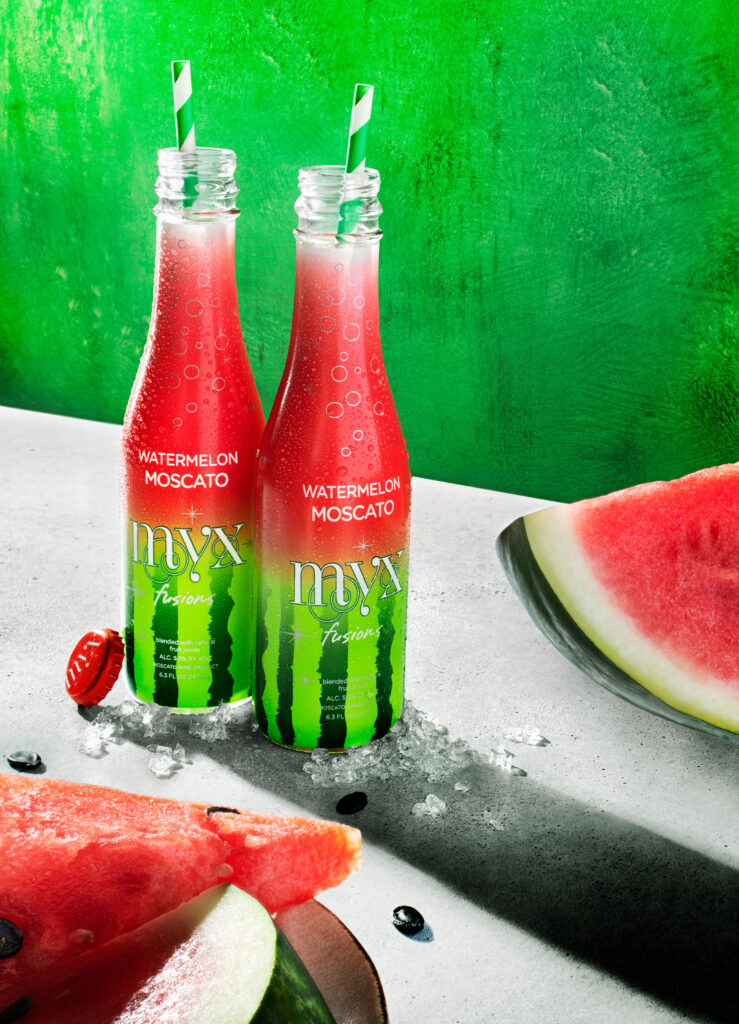
Nicki Minaj’s Watermelon Moscato for the Holidays
This clean and crisp infusion offers a perfectly balanced blend of premium Moscato wine with natural juices from fresh, ripe watermelons. Bursting with flavor, this refreshing Moscato tastes like summer in a glass.
MYX Watermelon Moscato wine is everything you want
MYX Watermelon Moscato wine is everything you want in a light-bodied, thirst-quenching summer beverage. It’s smooth, slightly effervescent, and easy to drink.
The signature fruit-forward notes of Moscato shine through, while the delightful watermelon flavor provides a crisp, clean finish.
MYX Watermelon Moscato is very versatile
MYX Watermelon Moscato is very versatile, with a sweetness and lower alcohol level that pairs well with most foods. Serve it with fish, chicken, seafood, duck, and vegetables. It’s also a wonderful companion for your favorite ice cream, cookies, and cakes. Keep it on ice at your outdoor barbecue or beach party for easy summer refreshment.
Find MYX Fusions Watermelon Moscato at wine retailers, supermarkets, and convenience stores.
Find MYX Fusions Watermelon Moscato at wine retailers, supermarkets, and convenience stores. It comes in 4-packs of 187ml single-serve bottles (MSRP $9.99 to $10.99) and 750ML bottles (distributed by Royal Wine Corp; MSRP of $8.99-$9.99).
- 5.5% alcohol by volume
- Sold in 187ml 4-packs and 750ml bottles
- Crafted from Gordo Australian Moscato Grapes
- Gluten-free, OU Kosher certified
MYX Beverage LLC
Refreshing and bursting with big, bold flavors, MYX Fusions offers a full range of fruit-infused Moscato wines (Peach, Mango, Coconut, and Watermelon), Sangrias (Classic and Tropical), Concord Wine, and Light Wine (Rose and Chardonnay). All wines are created from top-quality imported wines from Australia, Spain, Italy, and Argentina. Get in the Myx and follow MYX everywhere at @MYXFusions.
Myx Fusions beverage company was started by Nicki Minaj.
Post Views: 140



